
Panorama of Fukuoka, Japan |
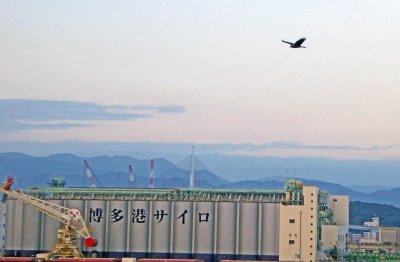
Grain Elevator in Fukuoka, Japan |

Early morning in Fukuoka, Japan |
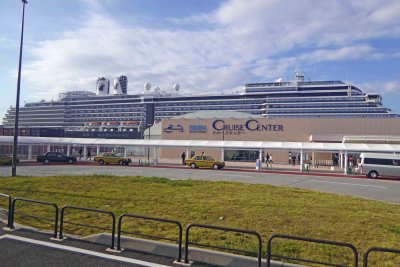
Westerdam docked at Fukuoka, Japan Cruise Center |
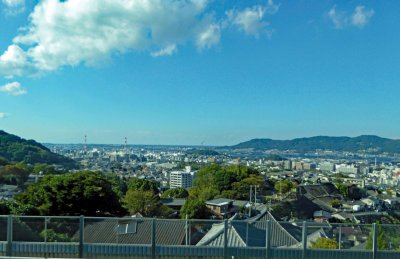
Overlooking Fukuoka, Japan |
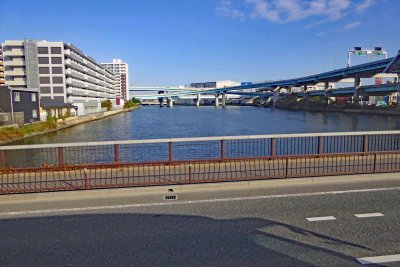
Chikugo River in Fukoka, Japan |

Kyushu is the third largest of Japan's five main islands |
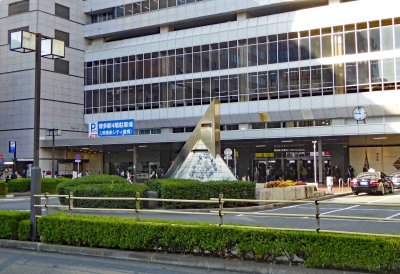
Downtown Fukuoka, Japan |
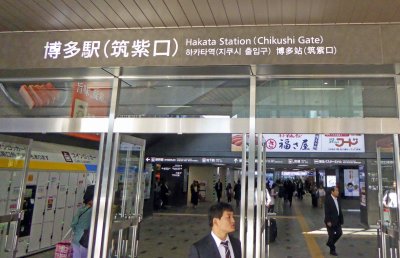
Hakata Train Station, Fukuoka, Japan |
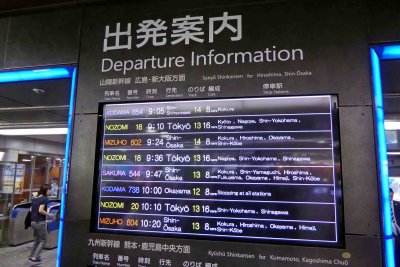
Waiting to board the Bullet Train to Kitakyushu (shown on board as Kokura), Japan |

Bullet train from Fukuoka to Kitakyushu (home of Kokura Castle); top speed is 170 mph |
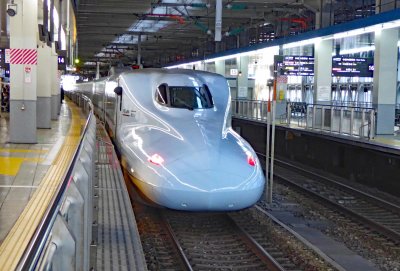
Bullet Train leaving Hakata Station, Fukuoka |
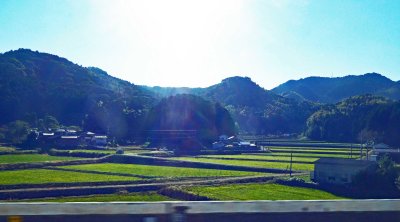
Rice Paddies in Japan |
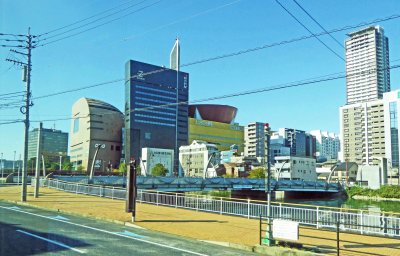
Kitakyushu is the second largest city on the island of Kyushu |
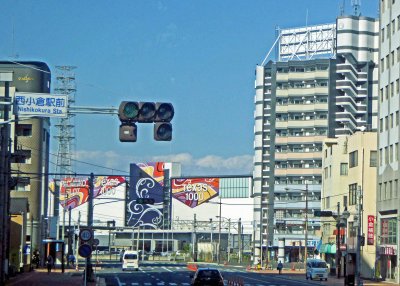
Interesting Pachinko-Slot Parlor just outside the Kitakyushu Train Station |
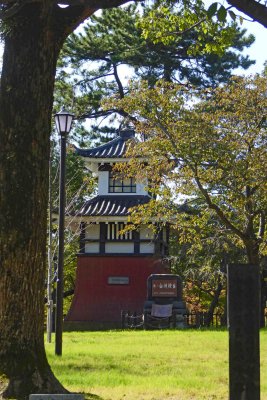
Shirasu Lighthouse (built in 1873) is preserved in Kokura Castle Park, Japan |
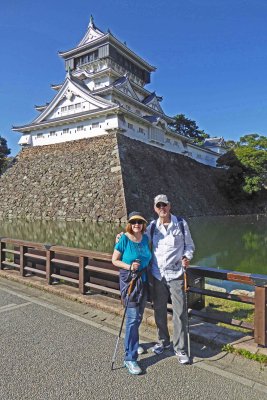
Reconstructed Kokura Castle Keep (first built 1602-08) |

Kokura Castle was property of the Ogasawara clan (samurai) between 1632 and 1860 |
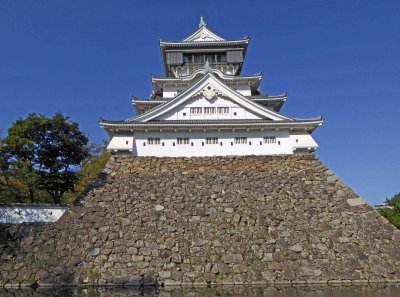
Kokura Castle's keep has the unusual feature that the fifth story of the castle is larger than the fourth |

Torii Gate at Kokura Castle is the entry to Yasaka Shrine |
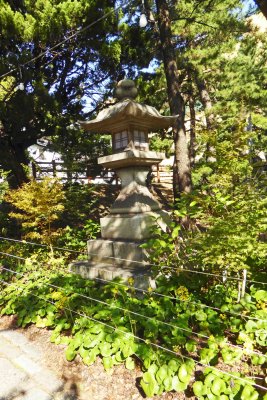
Stone Lantern on path to Yasaka Shrine |
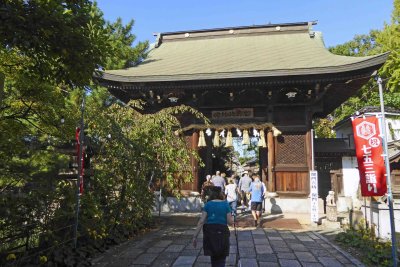
First gate to Yasaka Shrine |
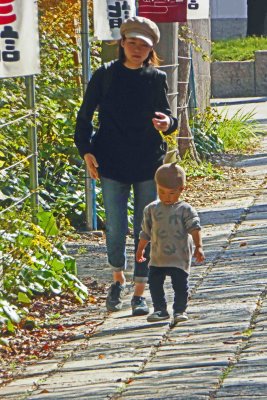
On the path to Yasaka Shrine |
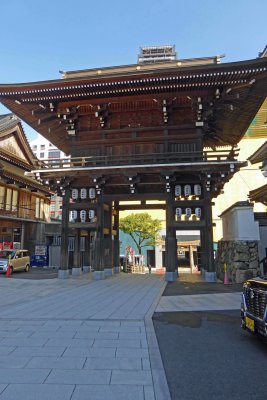
Romon (tower) Gate to Yasaka Shrine |
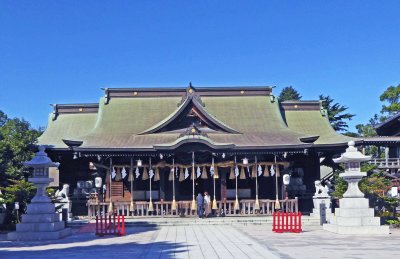
Yasaka Shrine was established in the 9th Century |
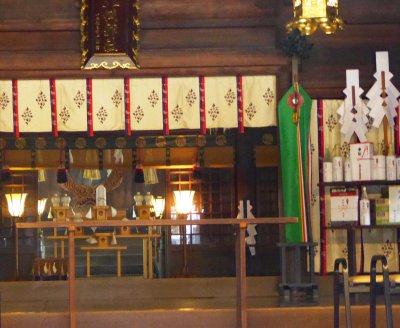
Inside Yasaka Shrine (moved to Kokura Castle in 1934) |
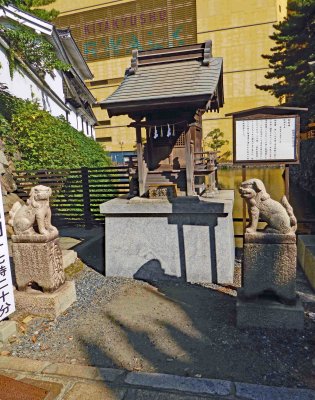
Komainu are statue pairs of lion-like creatures guarding Shinto shrines |
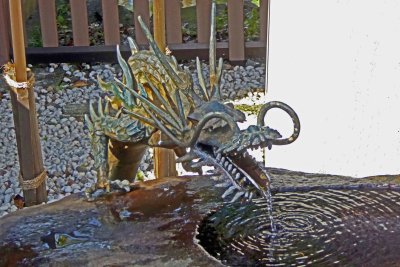
Dragon fountain at Yasaka Shrine |
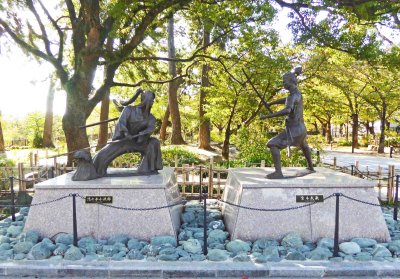
Depiction of epic duel between Sasaki Kojiro and Miyamoto Musashi in 1612 |
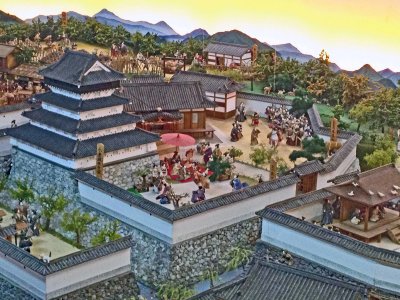
Inside Kokura Castle are miniatures depicting life in and around Kokura during the Edo Period (1603-1868) |
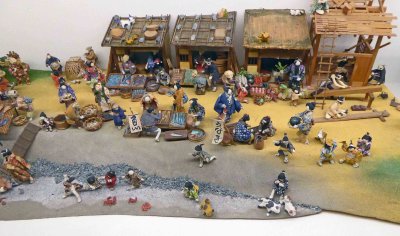
Miniatures inside Kokura Castle depict daily life of different classes in the Edo Period |
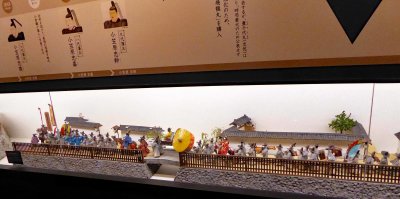
Miniature depiction of a celebration at Kokura Castle |
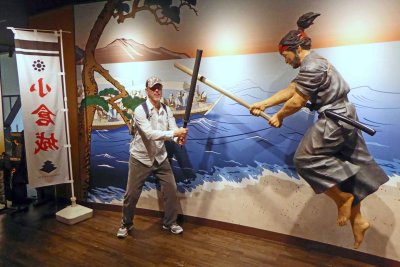
Bill battles a samurai at Kokura Castle |
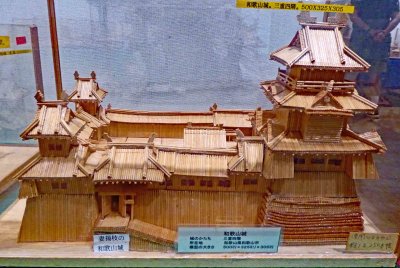
Matchstick replica of Kokura Castle |
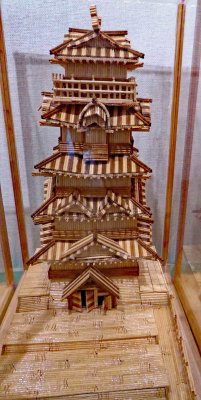
Another matchstick castle in Kokura Museum |
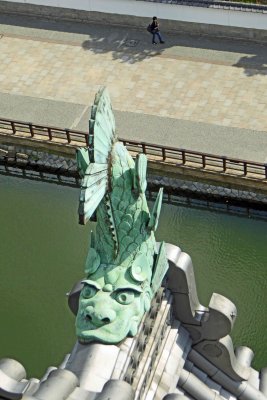
A 'shachihoko' (believed to cause rain to fall) on top of Kokura Castle Keep |
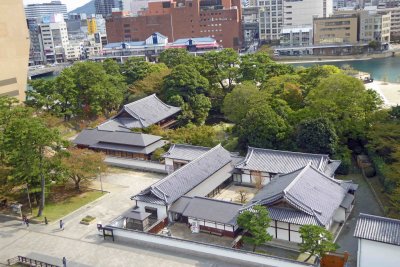
Looking down from top floor of Kokura Castle Keep |
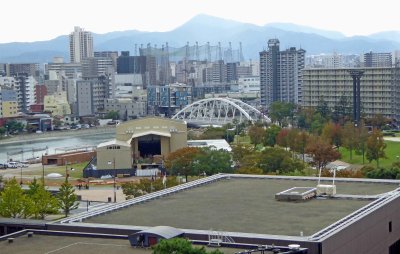
View of Kitakyushu from top floor of Kokura Castle Keep |
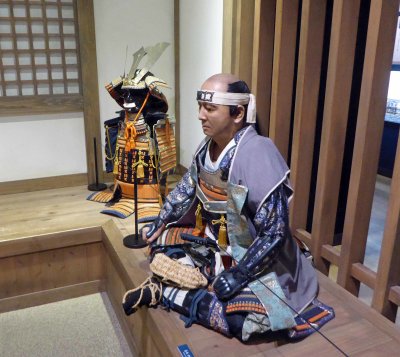
Japanese Samurai and Armor in Kokura Castle Keep |
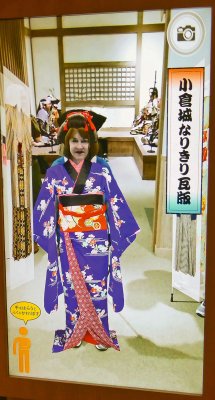
Interactive Photoshop device to try tradtional Japanese looks |
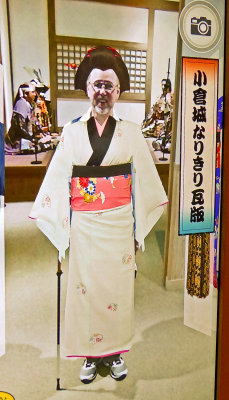
Playing with Interactive photshop for traditional Japanese costumes |
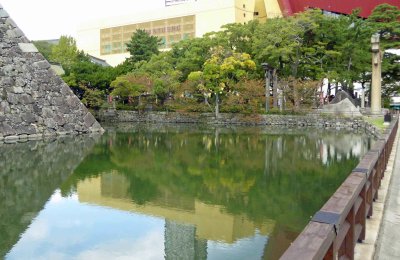
Stones around the moat remain from the 16th century |
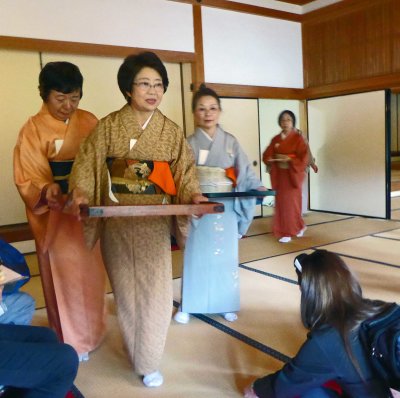
Japanese Tea Ceremony is held in Shitayashiki (lord's guest house next to Kokura Castle) |
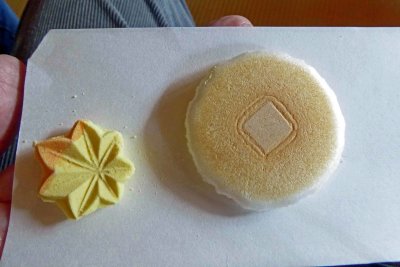
Seasonal sweets served before Japanese Green Tea |
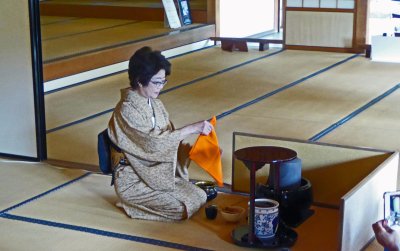
It takes about one year to become a Japanese Tea Master |

The Japanese Tea Ceremony is also called 'the Way of Tea' |
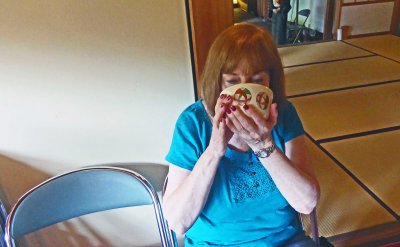
Drinking Japanese Green Tea (matcha) from ceremonial bowl |
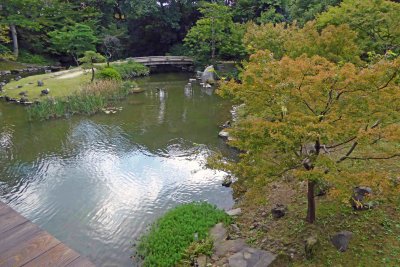
Kokura Castle Garden |
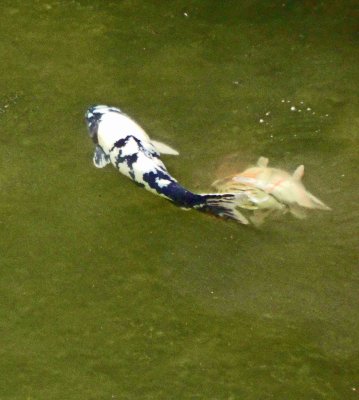
Black and White Koi in Kokura Castle Garden |

View of Kokura Castle Keep from the Garden |
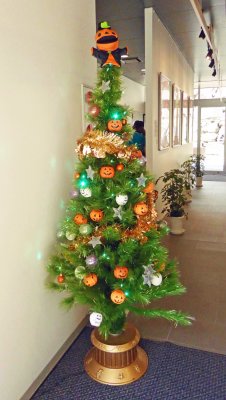
Halloween Tree in Kokura Castle gift shop |
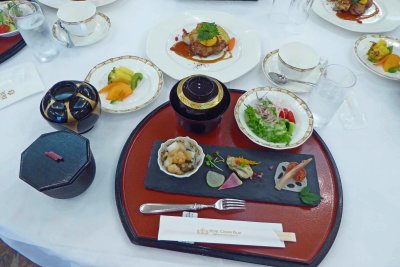
Japanese lunch at Crown Plaza Hotel, Kitakyushu, Japan |
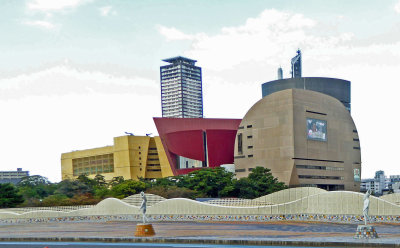
Kitakyushu Riverwalk Complex on the Murasaki River |

Strange statue on a bridge over the Murasaki River in Kitakyushu, Japan |
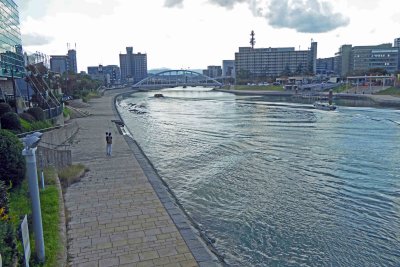
The Murasaki River outside the Crown Plaza Hotel in Kitakyushu, Japan |
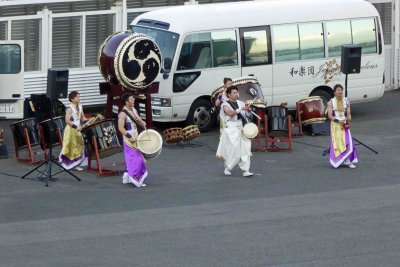
Farewell performance on the dock at Fukuoka, Japan |
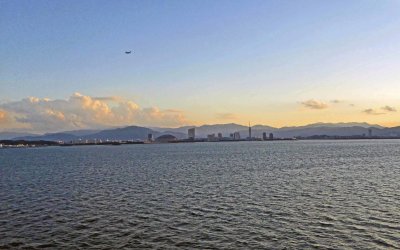
Last look at Fukuoka, Japan |
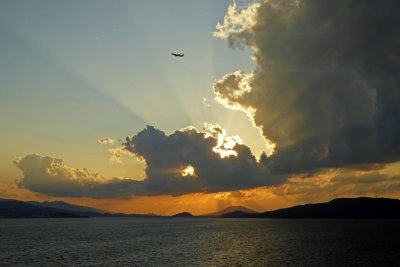
Sunset over Hakata Bay, Japan |
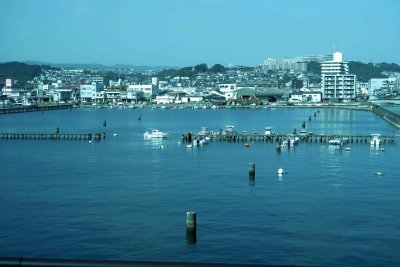
Docked in Kagoshima, Japan |
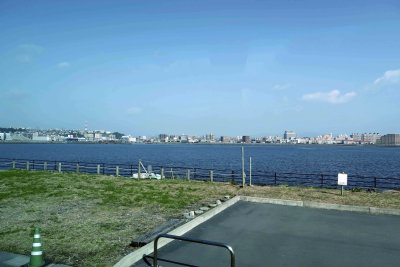
Leaving Kagoshima on a shore tour |
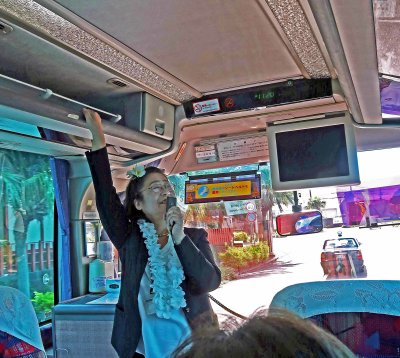
Tomoka is our tour guide for the day |
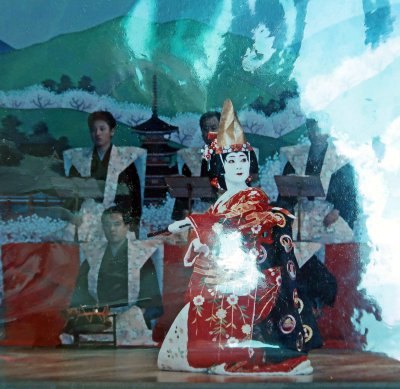
Tomoka was a Kabuki Dancer with the Japanese National Troupe when she was young |
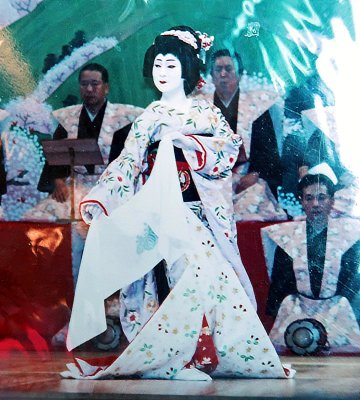
Another picture of Tomoka as a Kabuki Dancer with the Japanese National Troupe |
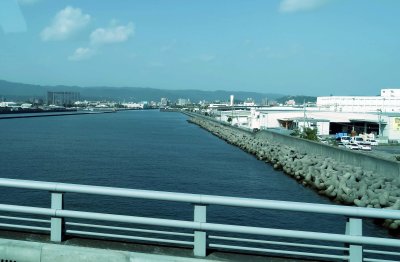
Seawall in Kagoshima, Japan |
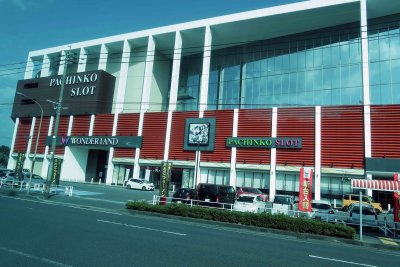
Japan's pachinko market generates more gambling revenue than that of Las Vegas, Macau, and Singapore combined |
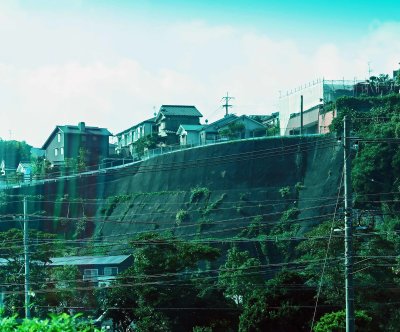
Houses above a retaining wall in Kagoshima, Japan |
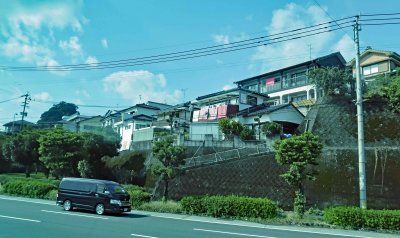
Houses in Kagoshima, Japan |
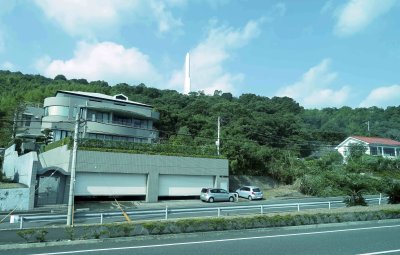
Rocket replica near Kagoshima, Japan |
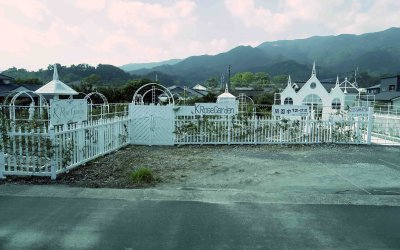
KRose Garden in Kagoshima |
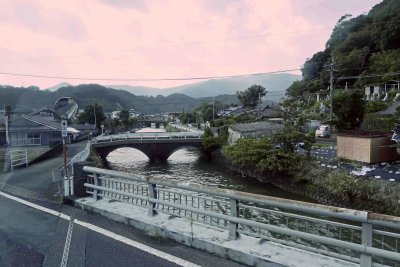
Kaisoko River, Japan |
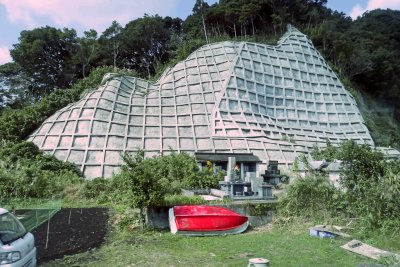
Erosion retaining wall outside Kagoshima, Japan |
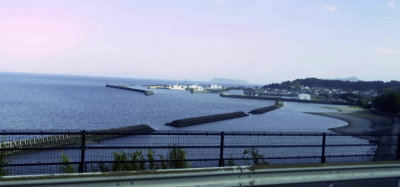
Small port between Kagoshima and Ibusuki, Japan |
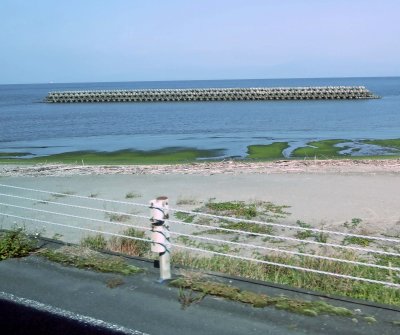
Storm surge breakwater barrier at beach north of Ibusuki, Japan |

JX Nippon Oil Terminal near Kagoshima has 57 tanks holding more than 46 million barrels of crude oil |
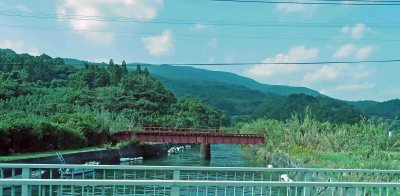
Boats on one of the canals of Ibusuki, Japan |
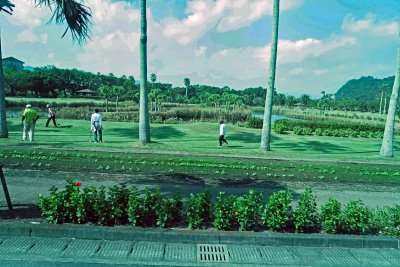
Ibusuki Golf Club Kaimon Course has hosted Lee Trevino, Tom Watson, Tiger Woods, and Seve Ballesteros |
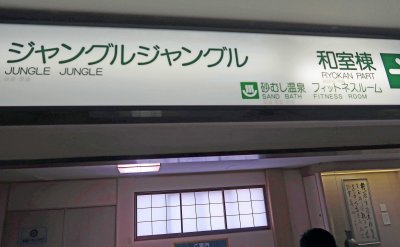
Headed to the Ibusuki Sand Bath |
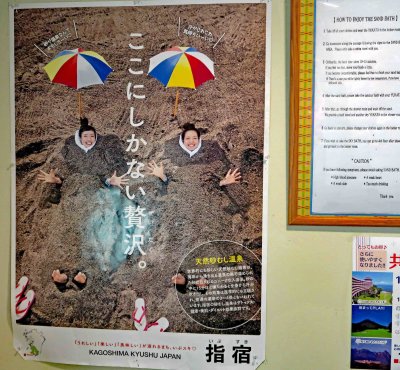
Instructions on how to enjoy the sand bath |
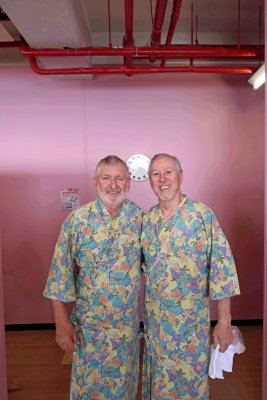
Make sure your Yukata is left over right (right over left is how Japanese dress their dead) |
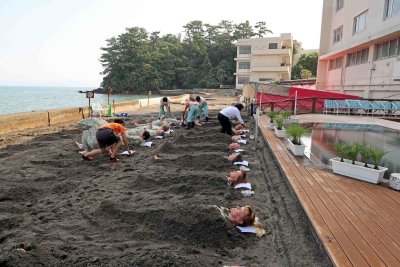
Volcanic sand is heated to 120-130 degrees fahrenheit by hot springs under the beach |
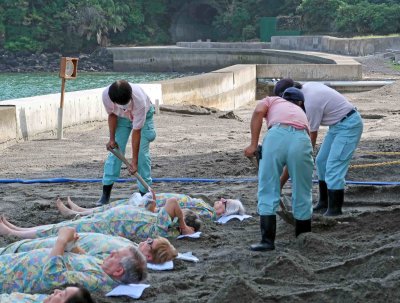
Volcanic sand is shoveled over participants |
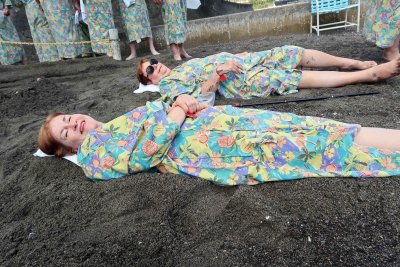
Susan's butt and feet are already burning |
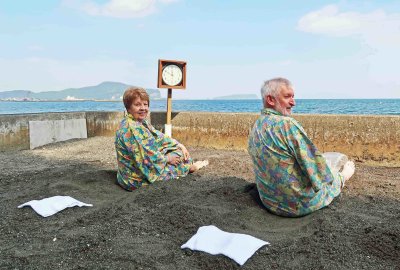
June and Graham waiting to be buried in sand |
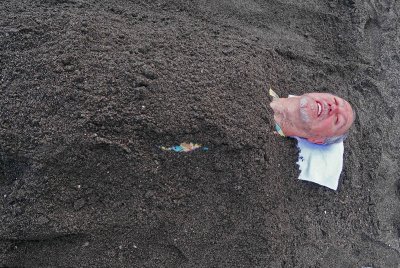
10-15 minutes under the hot sand is said to improve circulation and general health |
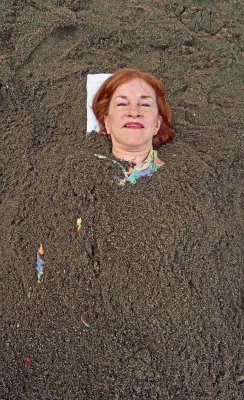
Sand bath in Ibusuki, Japan |
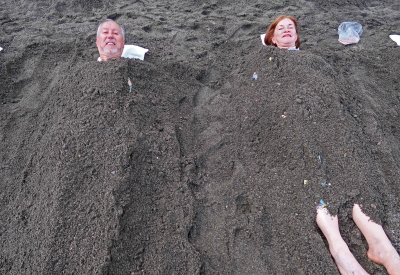
Susan needed to keep her feet out of the hot sand |
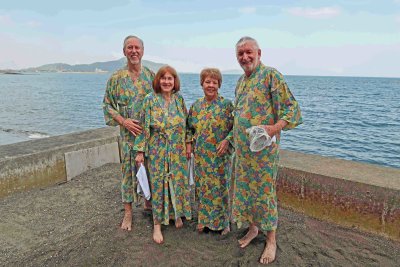
Yukatas are soaked with sweat after the sand bath |
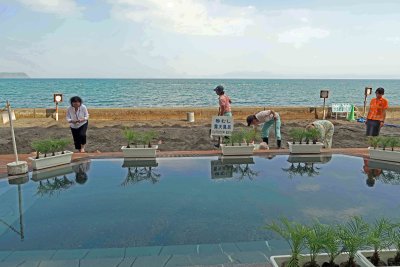
Next step is hot pool to wash off sand |
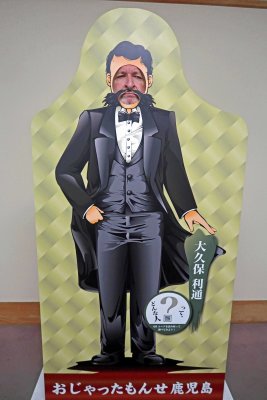
Not sure who this is, but Graham looks good as him |
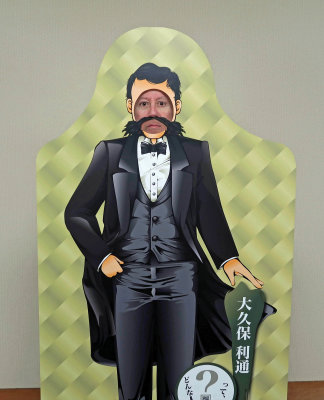
In the hall of the hotel with the sand bath |
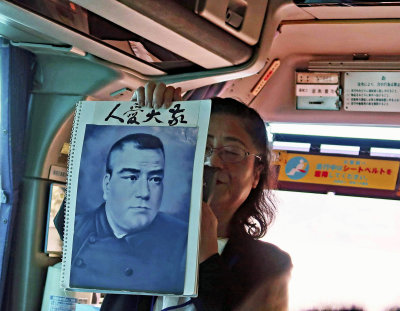
Saigo Takamori (the last true samurai) frequented the hot springs of Ibusuki, Japan |
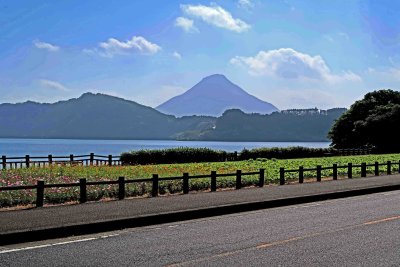
Mt. Kaimon is a 3,000-foot volcano sometimes called Little Fuji |
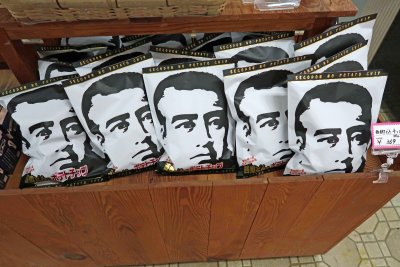
Segedon was a historical drama television series about Saigo Takamori |
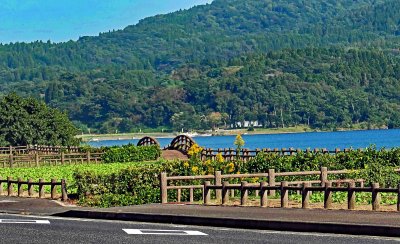
Lake Ikeda is the largest lake on Kyushu Island, Japan |
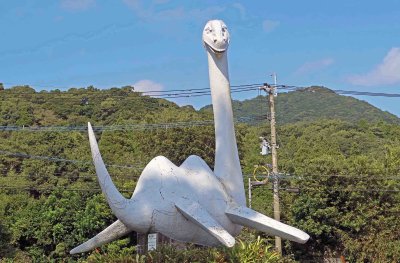
Issie is a Japanese lake monster said to lurk in Lake Ikeda |
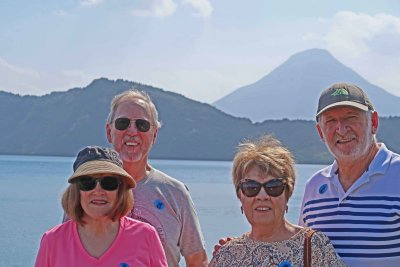
Lake Ikeda and Mt. Kaimon |
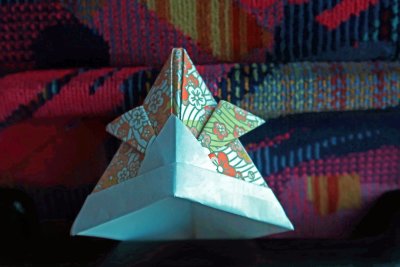
Oragami Samurai Helmet made by Bill |
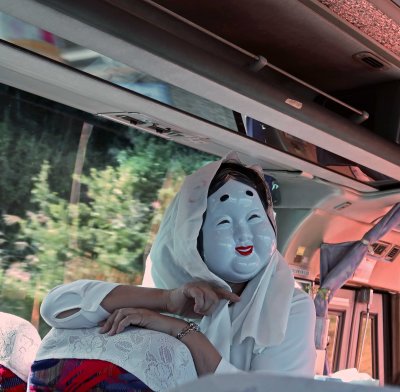
Otafuku is the goddess of mirth in Shinto religion |
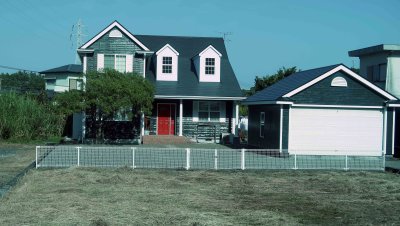
Very Cape Cod-looking house on outskirts of Kagoshima, Japan |
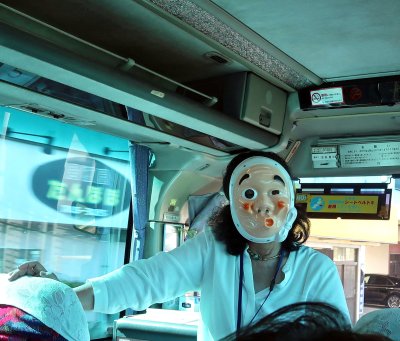
Hyottoko is the god of fire in this part of Japan |
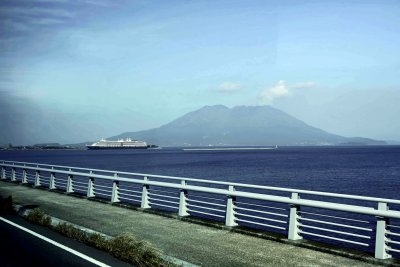
Westerdam docked in the shadow of Sakurajima Volcano |

Sakurajima is one of Japan's most active volcanoes and the symbol of Kagoshima |

Kagoshima viewed from our balcony on the Westerdam |
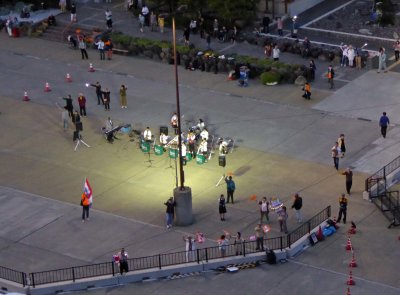
Farewell from Kagoshima, Japan |

Sakurajima smokes constantly, and minor eruptions often take place multiple times per day |
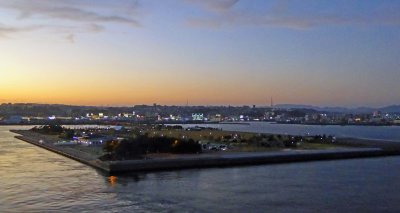
Sailing away from Kagoshima, Japan |
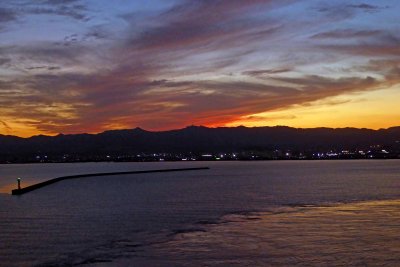
Red sky at night, sailor's delight |
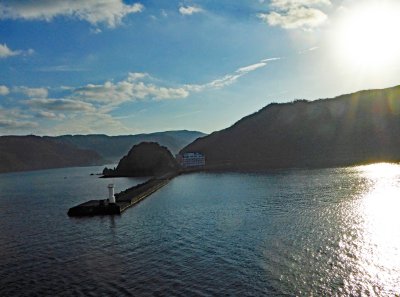
Yagi Ko Lighthouse at the entrance to Amami Island |
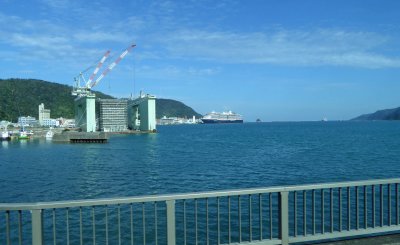
Holland America Westerdam docked at Amami (Oshima) Island |

Kasarizaki Lighthouse sits on the most northern point of Amami Island, known as Yo Misaki Cape |
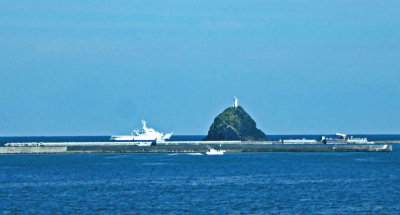
Japan Coast Guard at Kasarizaki Lighthouse |
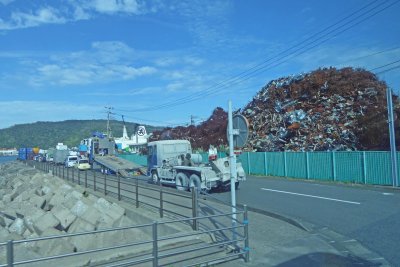
Traffic on Amami (Oshima) Island, Japan |
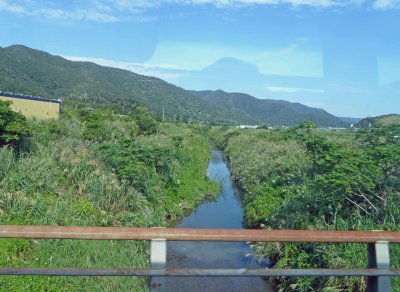
Touring Amami (Oshima) Island, Japan |
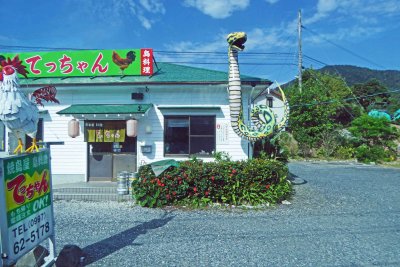
Don't know if this restaurant serves chicken and snake or what |
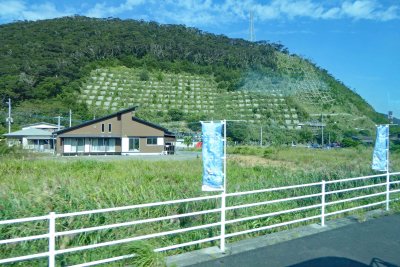
Erosion control on Amami Island, Japan |
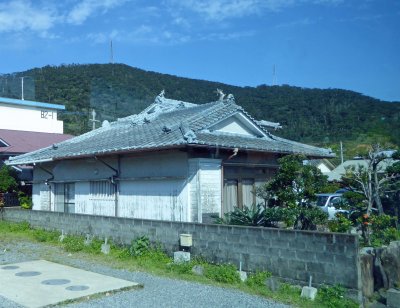
House with traditional Japanese roof on Amami Island, Japan |
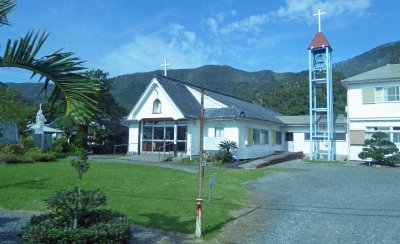
Sedome Church in Tatsugo-cho on Amami Island is over 100 years old |
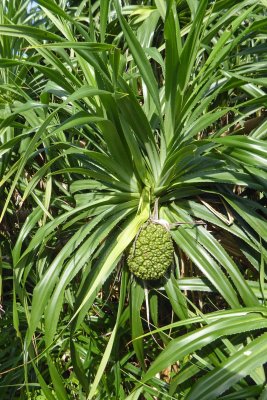
Screw Pine on Amami Island |
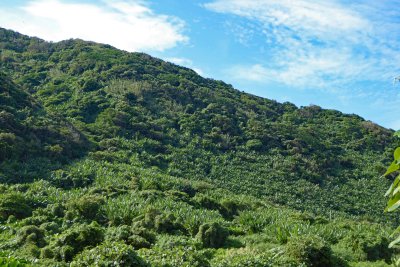
Hillside on Amami Island with a lot of Amami Cycad plants |
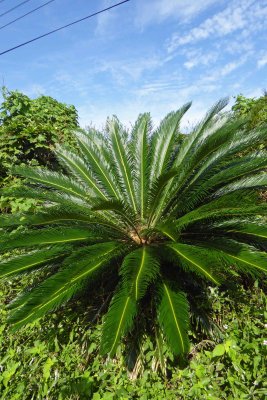
Cycads are an endangered plant that date to the Juraissic era |
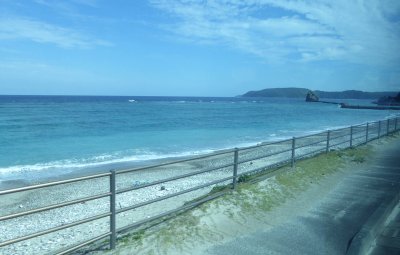
Driving along the East China Sea on the coast of Amami Island |
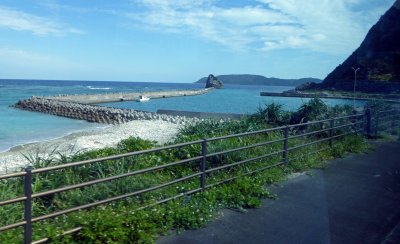
Protected cove on Amami Island |
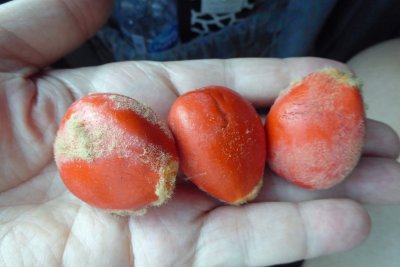
Native people of Amami Island have a way to remove the toxins and use Cycad seeds in cooking |
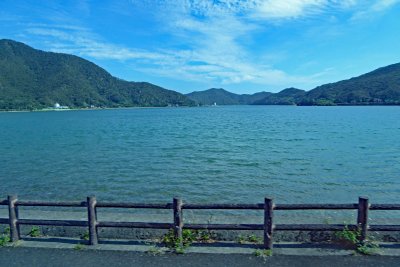
Katsugo Bay, Amami Island, Japan |
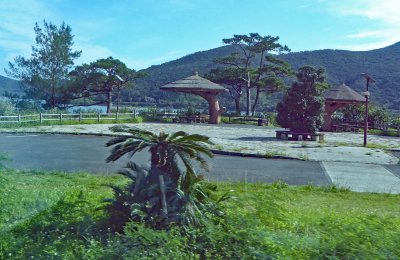
Katsugo Bay picnic tables, Amami Island, Japan |
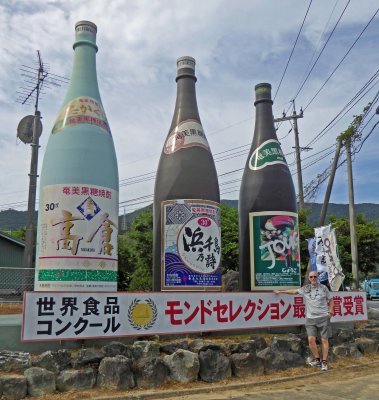
Stop at the Hamachidorikan Shochu Brewery, Amami Island |
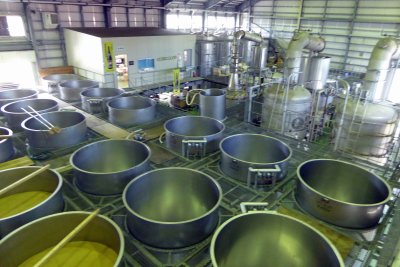
Shochu is a Japanese distilled beverage less than 45% alcohol |
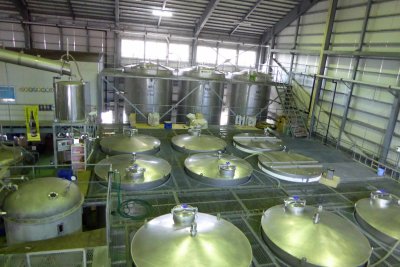
Shochu at Hamachidorikan Brewery is made only with locally grown brown sugar |
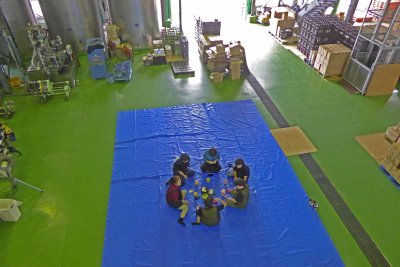
Break time at Hamachidorikan Brewery |
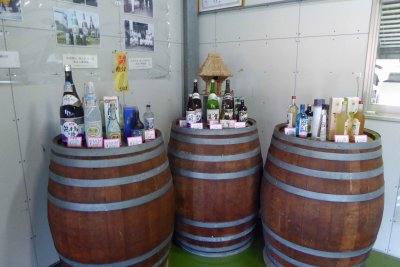
Shochu comes in different strengths, flavors, and prices |
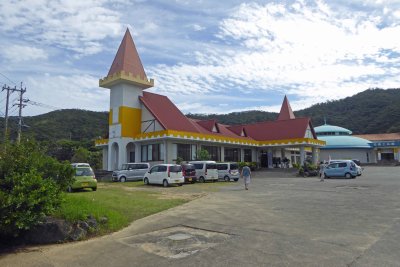
Time for some Shochu tasting |
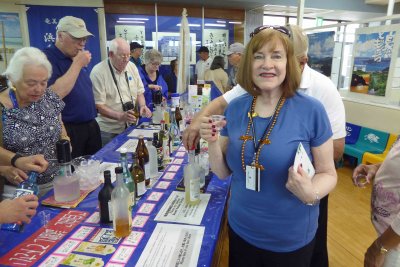
Lots of kinds of Sochu available for tasting - didn't buy any |
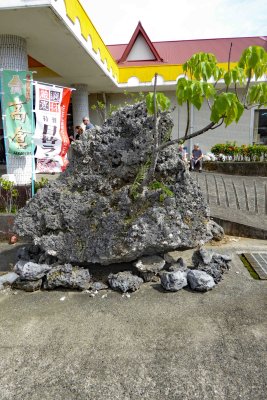
Tree growing out of lava rock at Sochu Brewery Store |
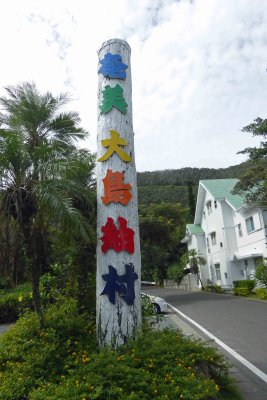
Arriving at Amami Oshima Tsumugi Village |
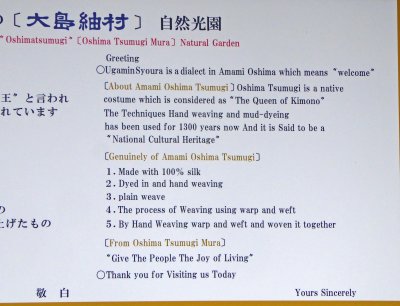
Amami Oshima Tsumugi silk is unique to Amami Island |
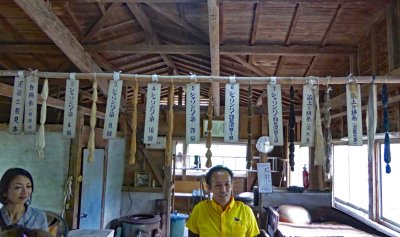
Silk threads are tied in sections to obtain patterns when dying |
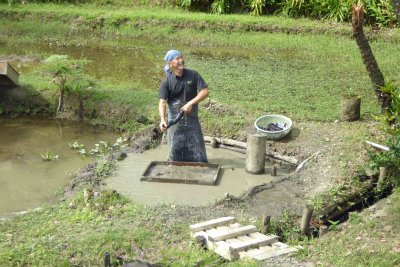
'Dorosome' (mud-dyeing) is an all natural fabric dyeing technique that can only be found in Amami (Oshima) |
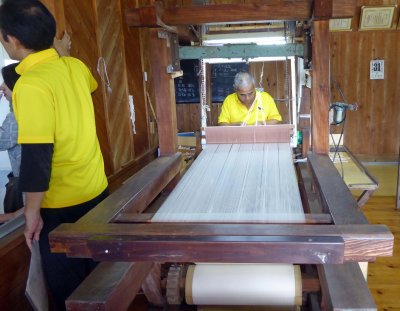
Fine silk vertical and horizontal threads are woven alternatively (one over the other) |
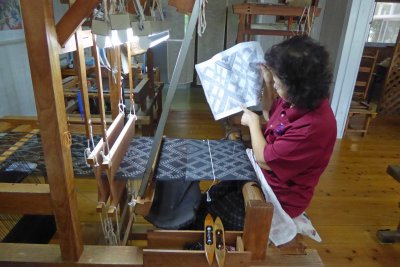
It can take up to 1 year to produce an Amami Oshima Tsumugi silk kimono |
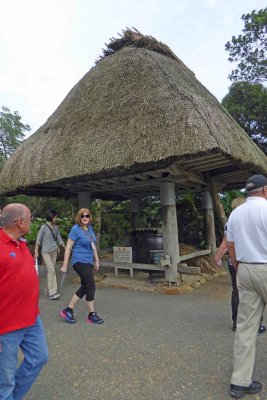
Takakura is a high-raised storehouse to protect the stored grains from rats and the humidity |
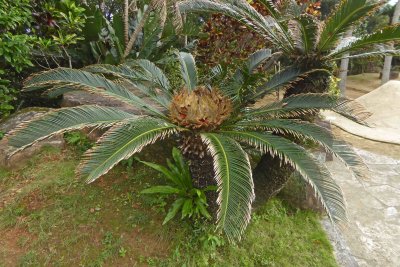
Cycads only bloom once every three or four years |
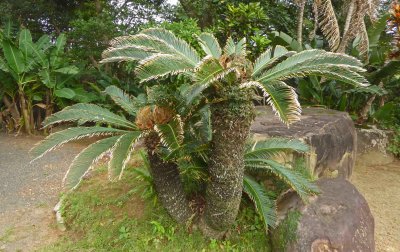
Cycads at Amami Oshima Tsumugi Village |
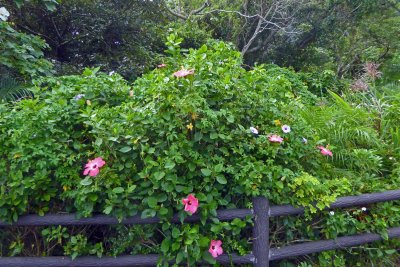
80% of Amami Island is covered in vegetation |
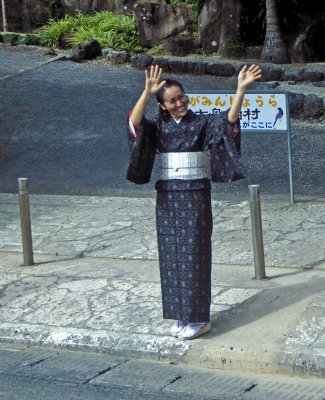
An Amami Oshima kimono sells for $3,000-6,000 in Tokyo |
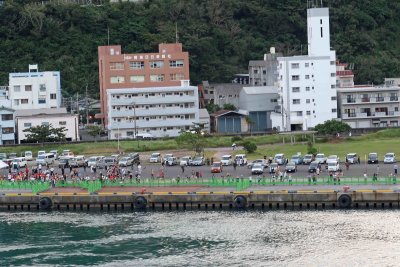
People waiving goodbye from Amami Island, Japan |
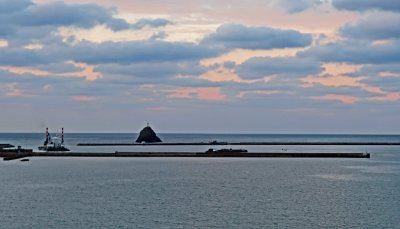
Sunset over Yo Misaki Cape, Amami Island, Japan |
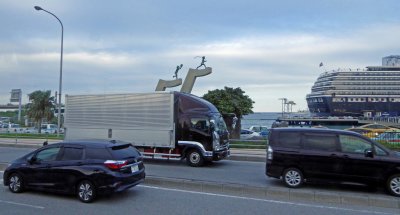
Arriving in Naha, Okinawa, Japan |
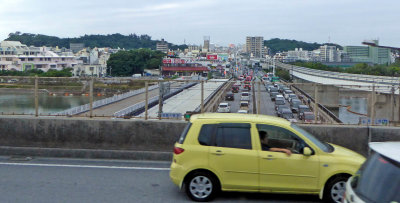
Naha is the capital city of Okinawa, Japan |
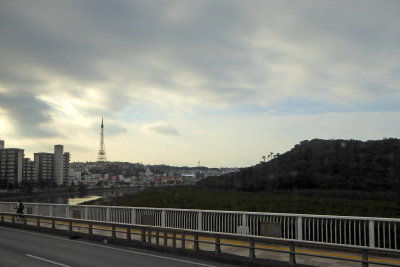
Morning in Naha, Okinawa, Japan |
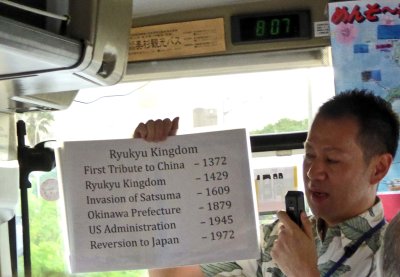
A brief history of Okinawa |
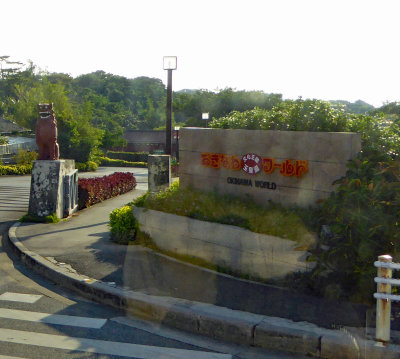
Okinawa World is a theme park about Okinawan culture |
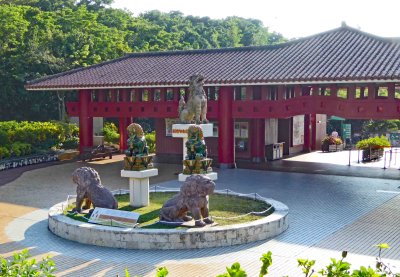
Entrance to Okinawa World |
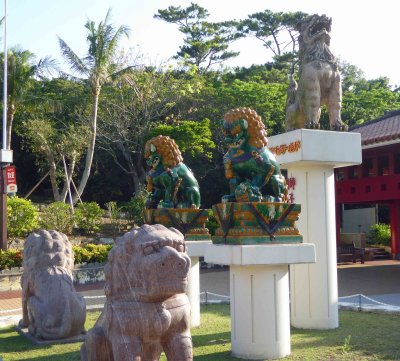
Shisa Dogs were adopted from China by Okinawans in the 15th Century to guard against evil spirits and misfortune |
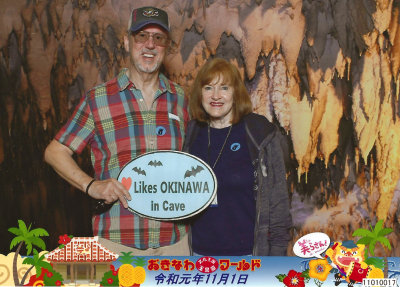
Entering Gyokusendo Cave in Okinawa World |
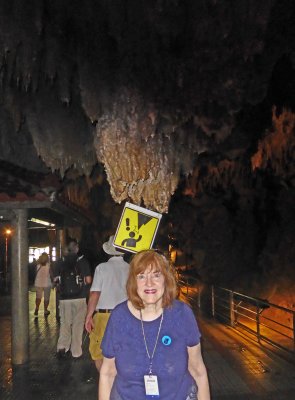
Gyokusendo Cave is a major attraction in Okinawa World |
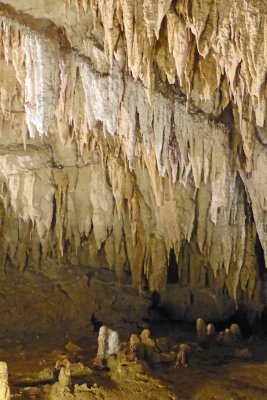
There are over 1 million stalagtites in Gyokusendo Cave |
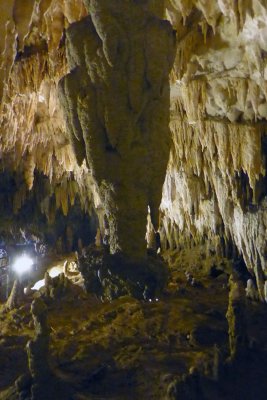
Huge stalagtite in Gyokusendo Cave |
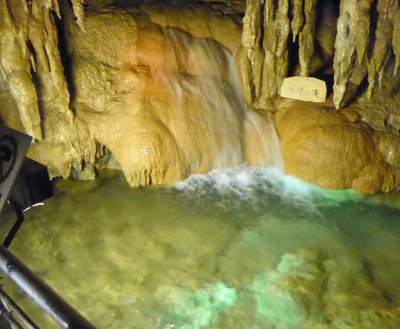
An underground river supplies this waterfall in Gyokusendo Cave |
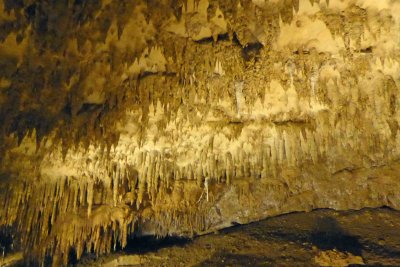
Gyokusendo Cave is over 300,000 years old |
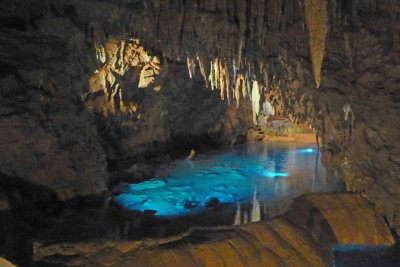
Blue Fountain is about halfway through Gyokusendo Cave |

Stalagmites that resemble carved statues in Gyokusendo Cave |
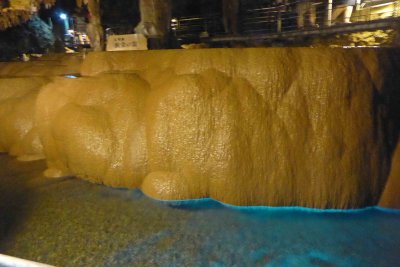
This stalagmite in Gyokusendo Cave is 8.2 feet high and 102 feet in girth |
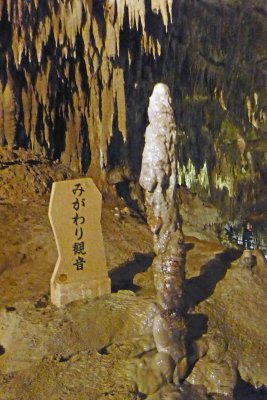
Interesting stalagmite in Gyokusendo Cave with name in Japanese |
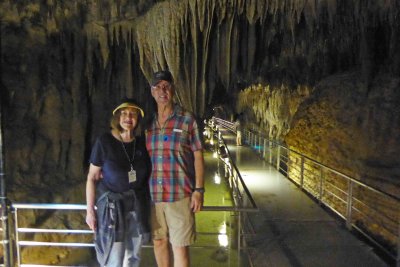
In front of 'gathered drapes' stalagtites in Gyokusendo Cave |
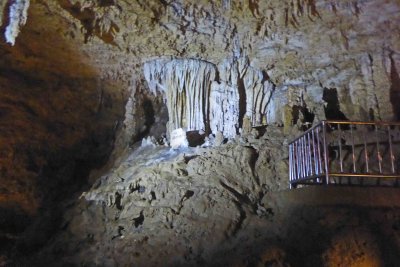
Formation in Gyokusendo Cave known as 'White Silver Aurora' |
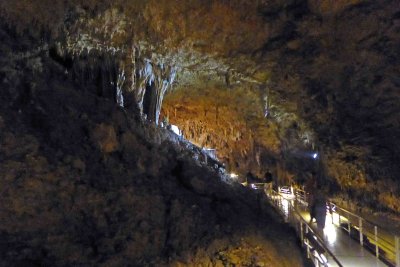
Finishing up the .55 mile walk through Gyokusendo Cave |
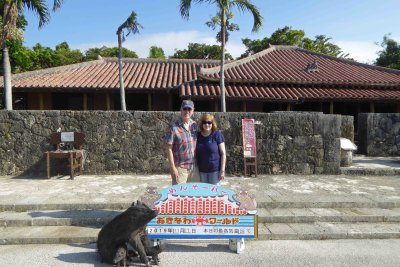
Replica of Uezu House (a traditional Ryukyuan home) built around 1750 |
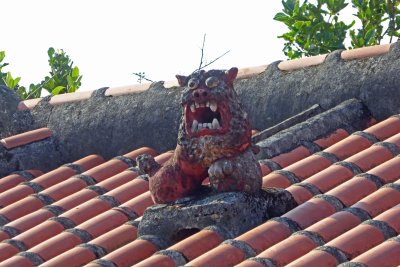
Shishu statues (known as shi-shi) were supposed to protect homes from evil spirits |
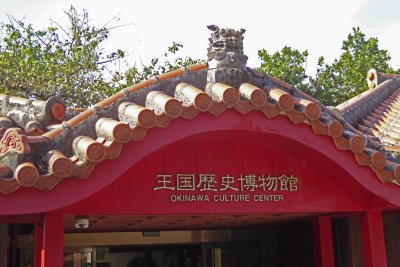
Exhibit in Okinawa World |
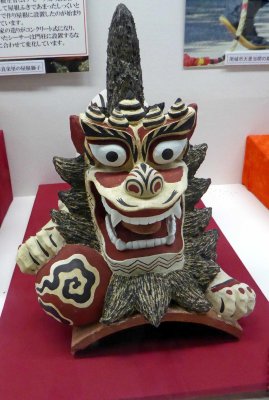
Very cool shi-shi in Okinawa Culture Center |
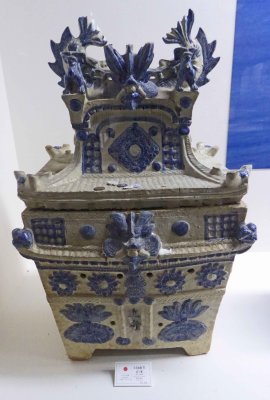
Ceramic Pottery in Okinawa Culture Center |
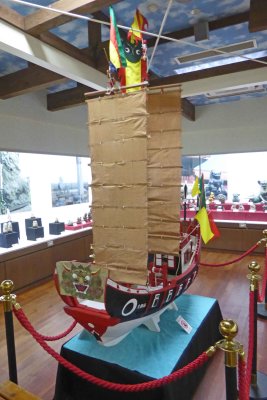
Replica of Okinawan trading vessel (1400-1800) |
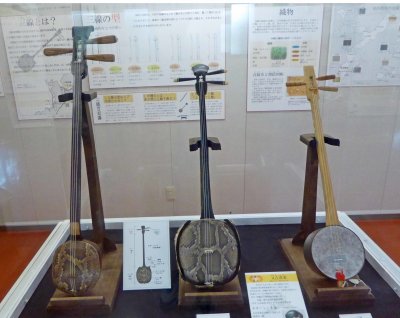
The Sanshin is an Okinawan musical instrument (developed in the 14th century) |
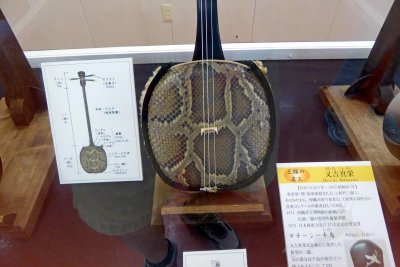
The Sanshin is considered the soul of Okinawan folk music, the 'heart' of the Ryukyu people |
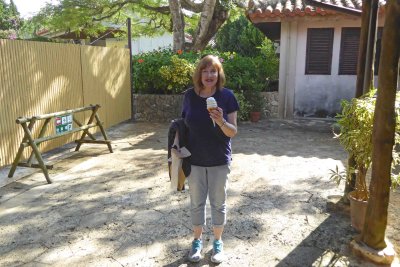
Eating ice cream at Okinawa World -- in case Susan is not a fan of lunch |
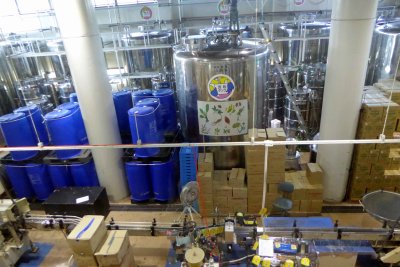
Nanto Brewery at Okinawa World |
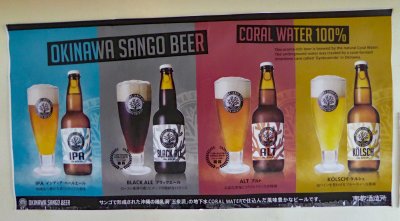
Microbrewery beers at Okinawa World |
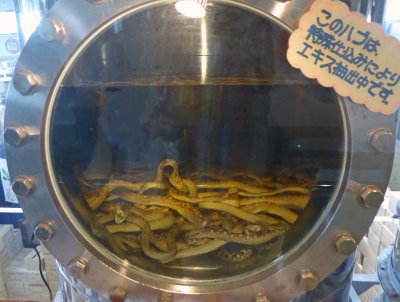
Habu snakes used for making Habushu at Nanto Brewery |
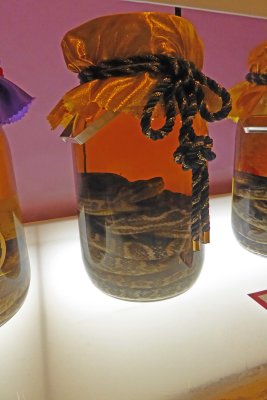
Habushu (Okinawan Snake Wine) is a liqueur that contains a habu snake in the bottom |
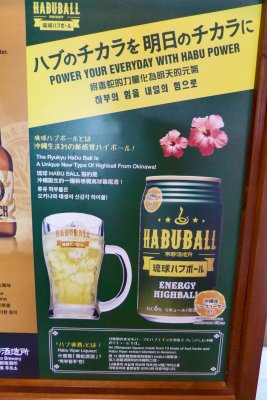
Bill had to try Habuball -- habu snake extract blended with habu sake and citrus juice |
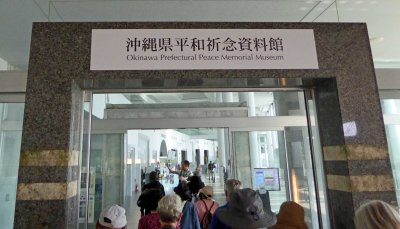
Visiting the Okinawa Prefectural Peace Memorial Museum |
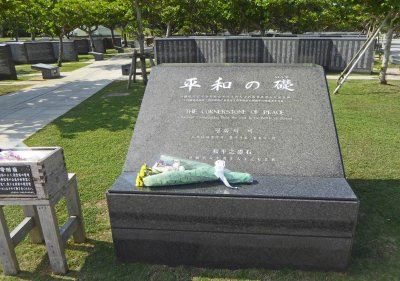
The Cornerstone of Peace was unveiled on 23 June 1995 in memory of the fiftieth anniversary of the Battle of Okinawa |
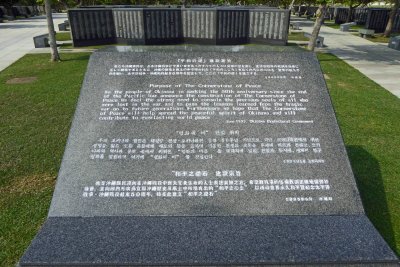
Inscribed purpose of the Cornerstone of Peace |
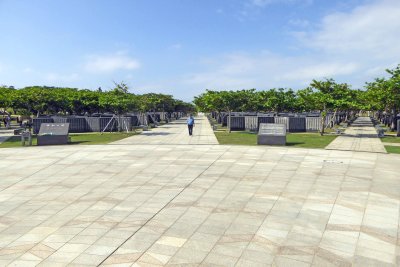
Peace Memorial Park has concentric arcs of wavelike black granite stelai |
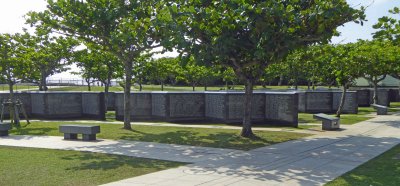
Okinawa Peace Park Stelai contain the names of 241,281 combatants and civilians who died in the Battle of Okinawa |
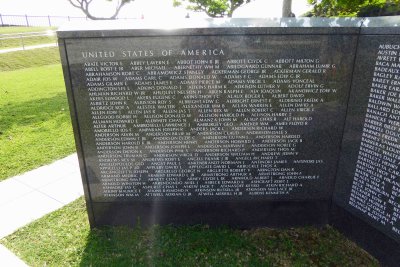
United States section of Peace Memorial Park contains the names of 14,009 Americans who died |
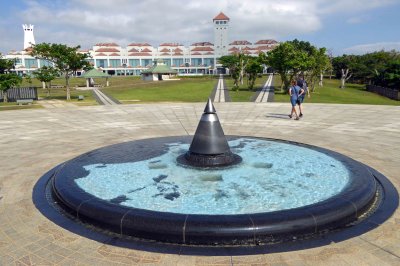
The Flame of Peace is lit when visiting heads of state come to pay their respects to the dead |
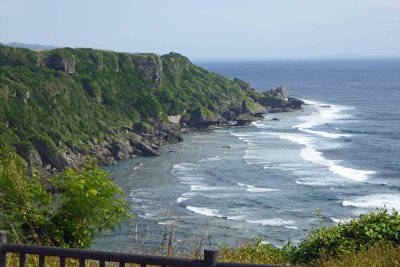
Cliffs where many civilians committed suicide to avoid the rape and mutilation they were told to expect from the Americans |
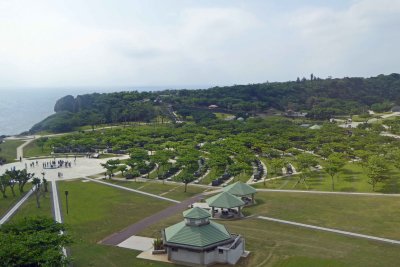
View of Peace Memorial Park from museum observation tower |
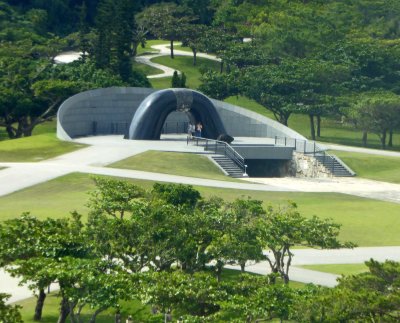
Memorial representing a cave where citizens of Okinawa hid and were killed by Japanese or committed suicide during the battle |
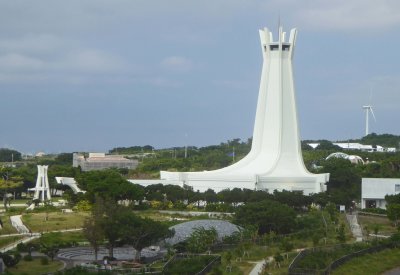
The Okinawa Peace Hall contains a 12-meter-high lacquer Buddha - a symbol of peace |
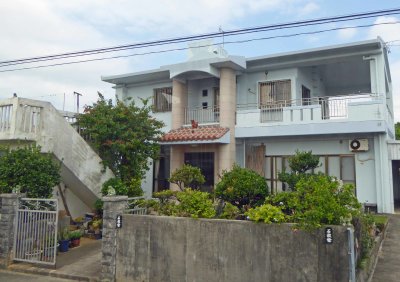
Modern house on Okinawa Island with shi-shi over the entrance |
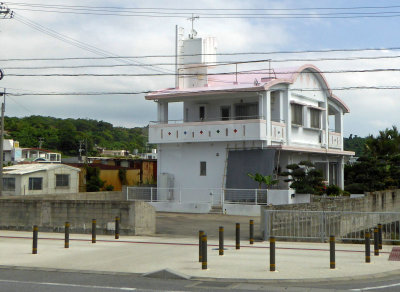
Interesting house on Okinawa |
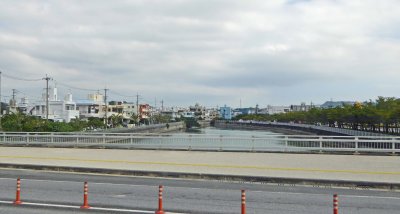
Nagado River on Okinawa |
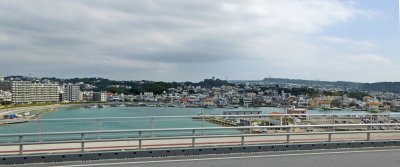
Man Lake near Naha, Okinawa |
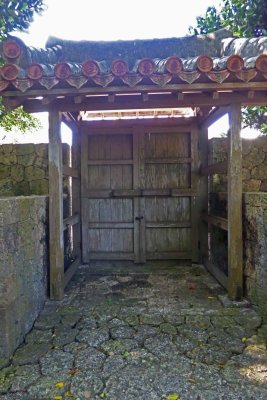
The Main Gate to Shikina-en gardens for use by rulers of the Ryukyu Kingdom |
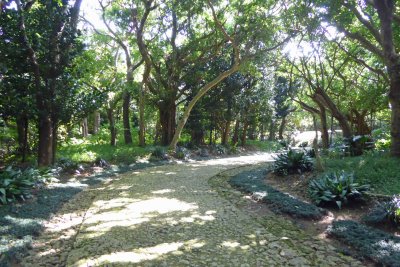
Shikina-en gardens were laid out in 1799 to embellish one of the residences of the ruling Ryukyu family |
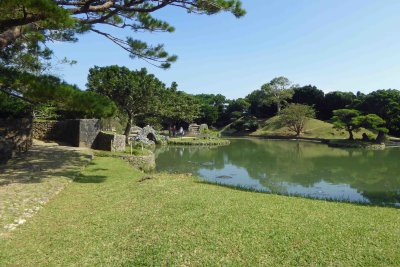
Shikina-en gardens in Naja, Okinawa |
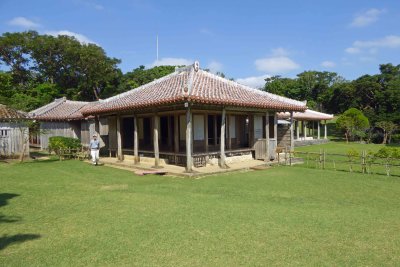
Udun Palace was used for reception of a Chinese envoy in 1800 |
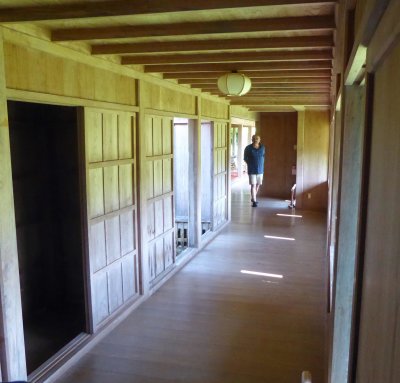
Paper and wood dividers in the hall of Udun Palace |
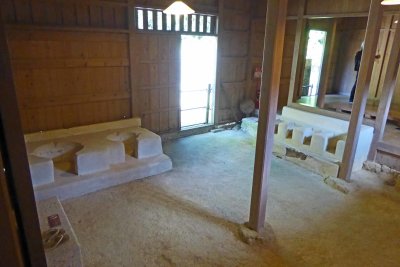
Kitchen in Udun Palace had 2 large and 6 small fireplaces with an open ceiling so smoke could escape |
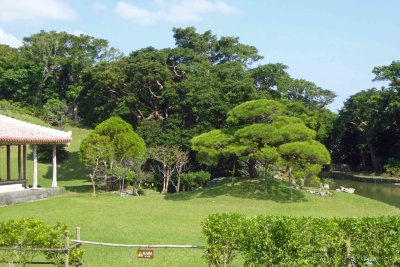
Pine trees are called 'Mastu,' which means 'waiting for a god's soul to descend from heaven' |
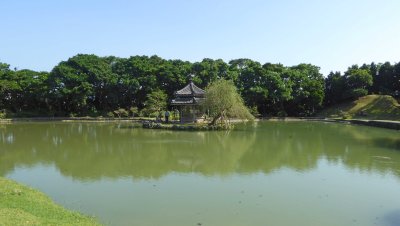
Chinese-style hexagonal pavilion in Shikina-en gardens |
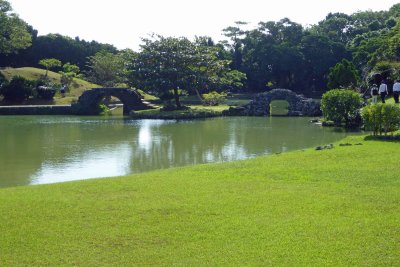
Two arched stone bridges in Shikina-en gardens |
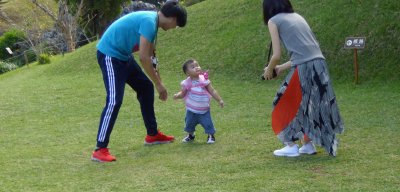
Family enjoying nice weather in Shikina-en gardens |
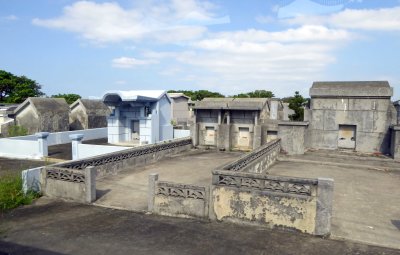
Cemetery in Okinawa |
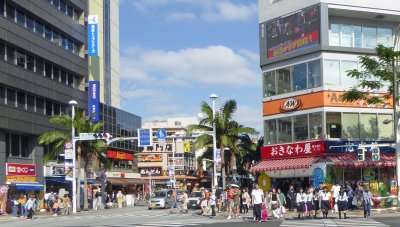
Kokusaidori Street in Naha, Okinawa |
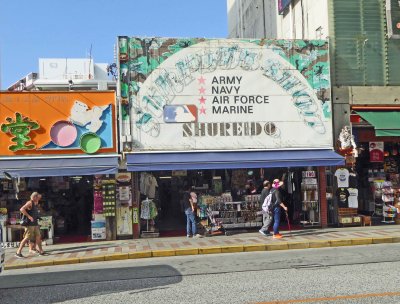
Store on Kokusaidori Street in Naha, Okinawa |
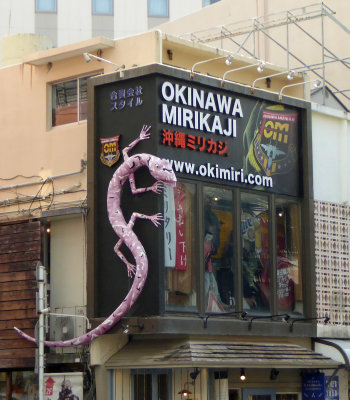
Store on Kokusaidori Street in Naha, Okinawa |
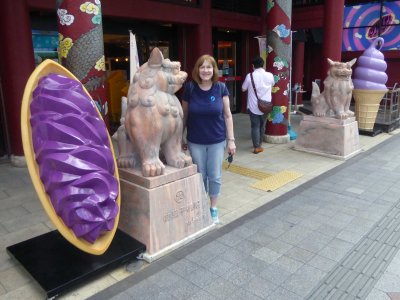
Susan with shi-shi on Kokusaidori Street in Naha, Okinawa |
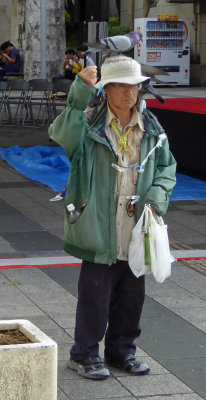
Pigeon whisperer in Naha, Okinawa |

Streetscape in Naha, Okinawa |
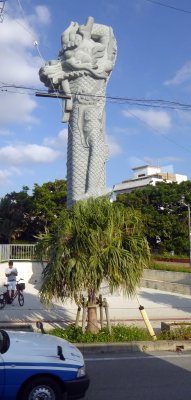
The dragon pillar monument was created to commemorate the friendship between Naha City and Fuzhou City, China |
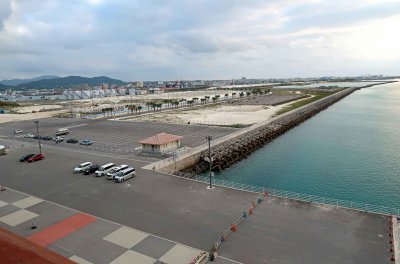
Docked at Ishigaki Island, Japan |
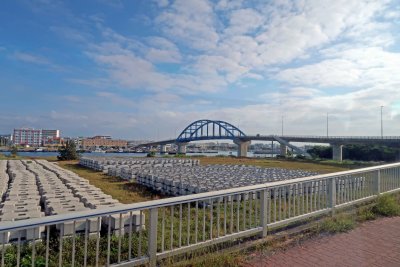
Southern Gate Bridge is an icon of Ishigaki Island, Japan |
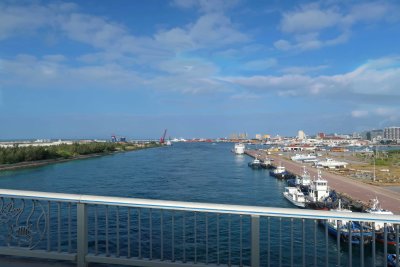
View of Ishigaki Bay from Southern Gate Bridge |
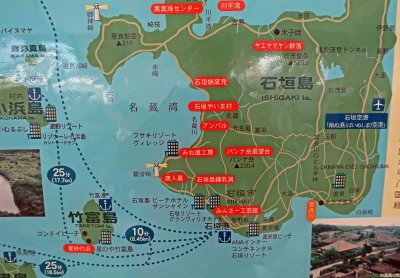
Map of ferry routes from Ishigaki Island to Taketomi Island |
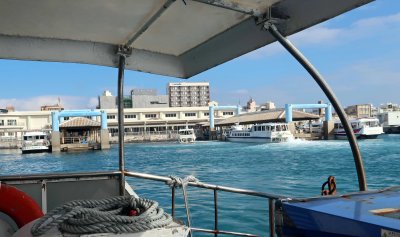
Leaving Ishigaki Ferry Terminal for Taketomi Island |
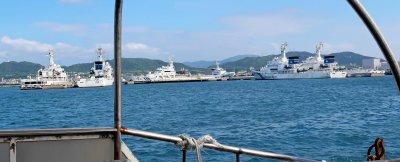
Japan Coast Guard on Ishigaki Island |
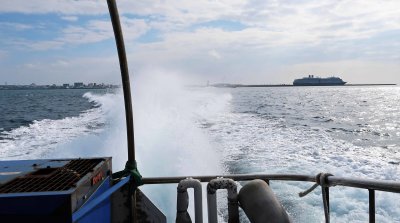
Taking a high-speed ferry from Ishigaki Island to Taketomi Island, Japan |

Approaching Taketomi Island, Japan |
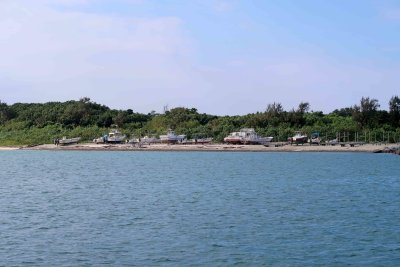
Boats stored on Taketomi Island, Japan |
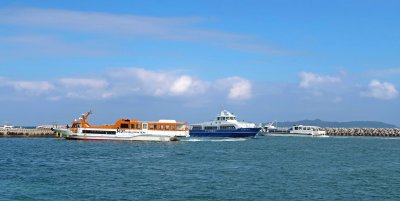
Ferries to and from Taketomi Island, Japan |
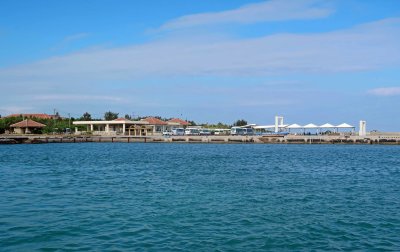
Ferry Terminal on Taketomi Island, Japan |
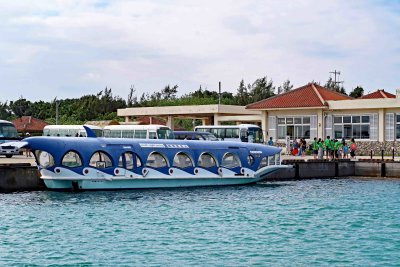
Interesting boat at the Taketomi Ferry Terminal |
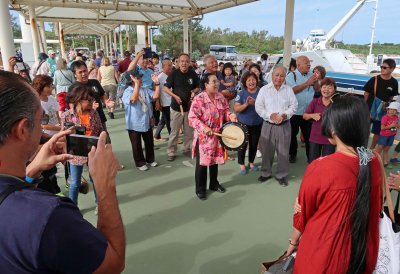
Prayer ceremony send-off for group who were visiting Taketomi Island |
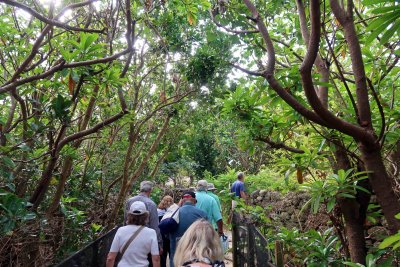
Leaving the dock at Taketomi Island |
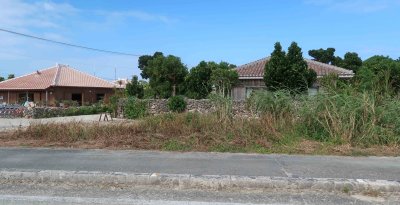
Houses on Taketomi Island are built in the traditional style of the Ryukyu Kingdom (15th-19th centuries) |
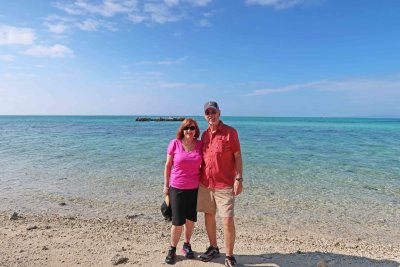
Kaiji Beach on Taketomi Island |
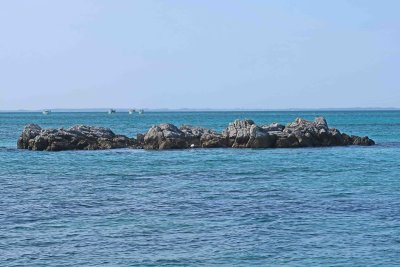
Boats on the East China Sea at Kaiji Beach |
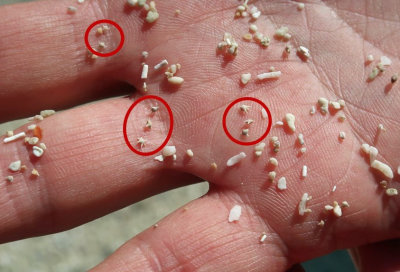
Kaiji Beach is known for its tiny star-like skeletons of small one-celled organisms |
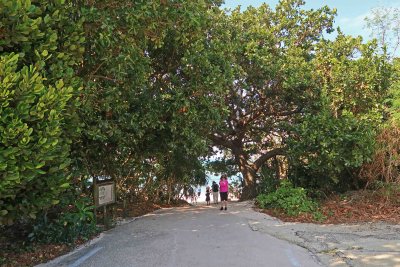
Susan leaving Kaiji Beach on Taketomi Island |
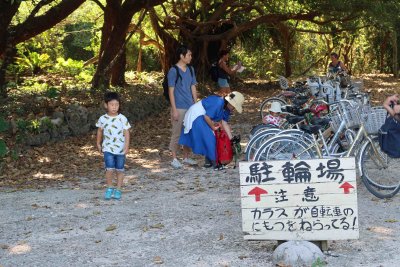
Bicycle parking at Kaiji Beach on Taketomi Island |
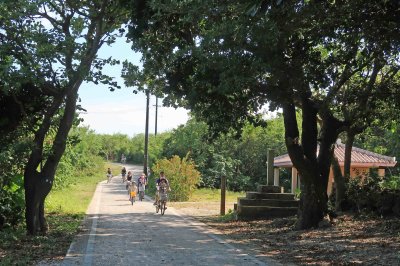
Bicycles are popular on Taketomi Island |
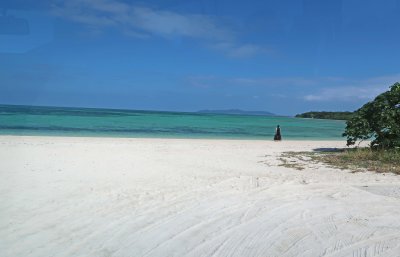
Kondoi Beach is the best beach for swimming on Taketomi Island |
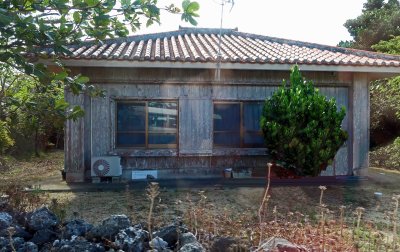
Old house on Taketomi Island buit in the traditional Ryukyu style |
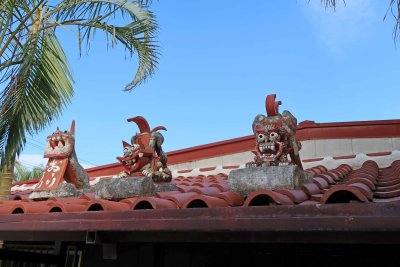
Shisas are placed on Ryukyu-style roofs to ward off evil |
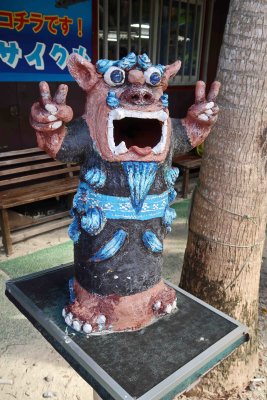
Shisa statue on Taketomi Island |
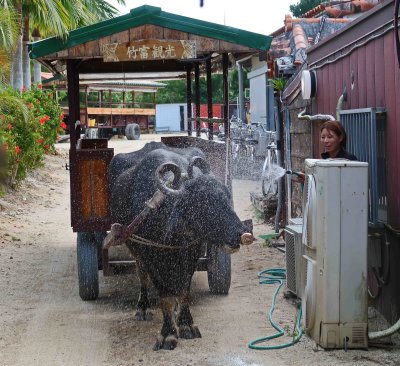
Cooling down a Water Buffalo before a cart ride on Taketomi Island |
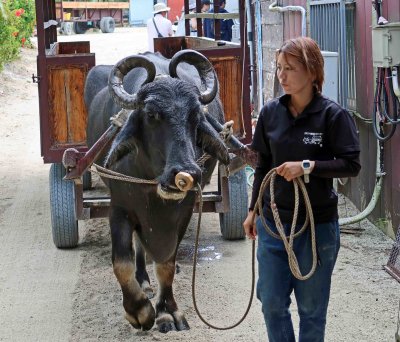
Water Buffalo ready to start a cart ride on Taketomi Island |
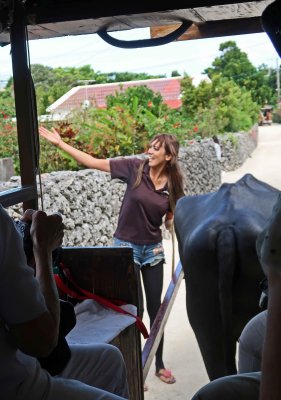
Our tour guide and water buffalo wrangler on Taketomi Island |
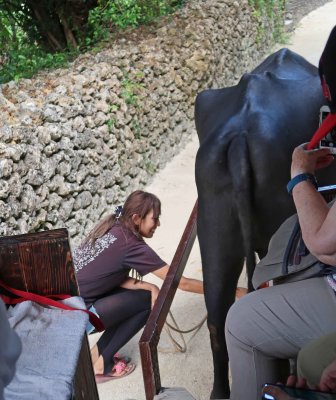
Our water buffalo had to stop and pee a lot |
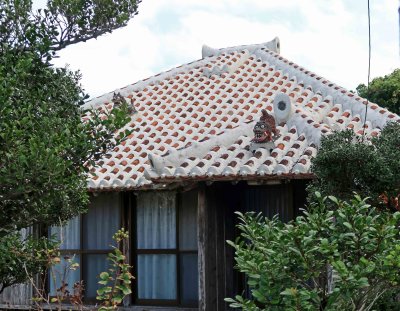
Really pretty roof with 'shisa' on Taketomi Island |
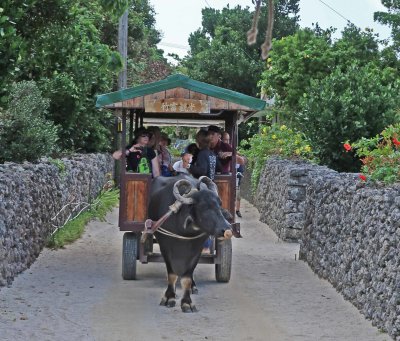
Water Buffalo Cart behind us |
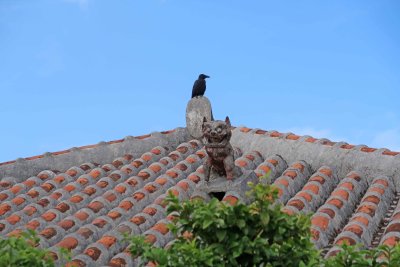
Crow and Shisa on roof on Taketomi Island |
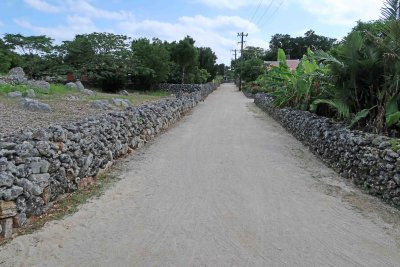
Taketomi Island is known for its traditional buildings, stone walls, and sandy streets |
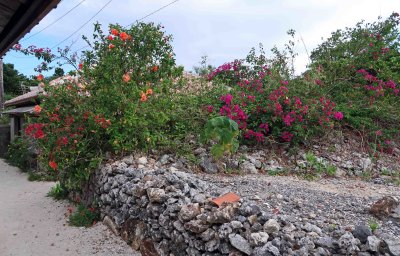
Flowers on Taketomi Island |
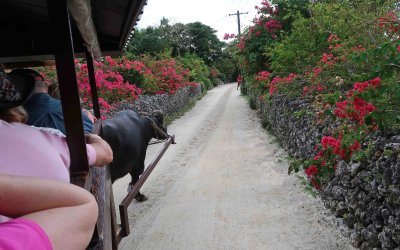
Street on Taketomi Island |
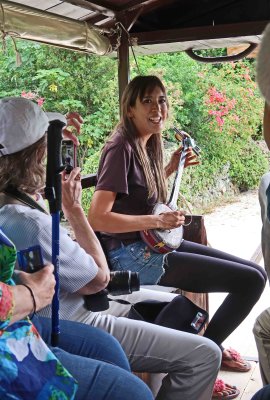
Guide playing 'sanshin' and singing traditional Japanese song |
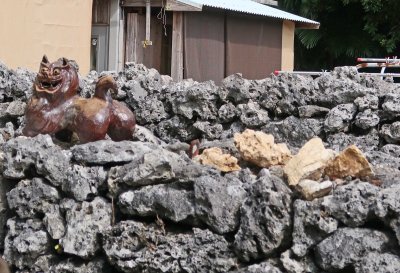
Interesting shisa on coral wall |
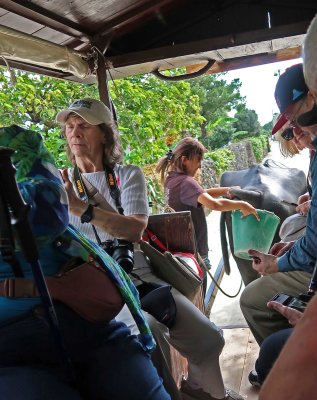
Now our water buffalo has to poop |
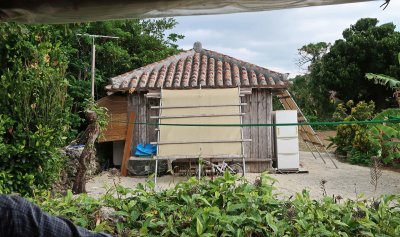
Sunscreen on Taketomi house |
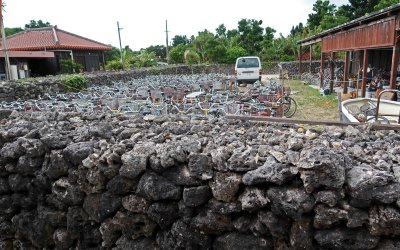
Bicycle rental on Taketomi Island |
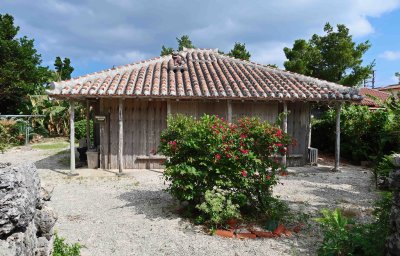
Traditional Ryukyu architecture on Taketomi Island |
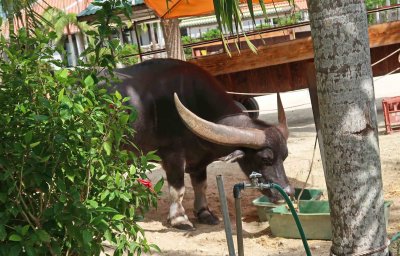
Some serious horns on the water buffalo |
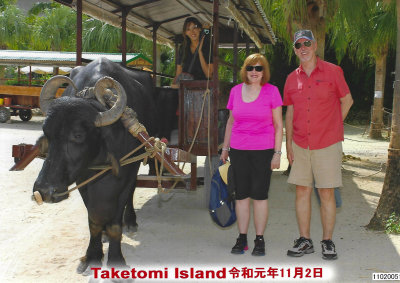
Our water buffalo cart and tour guide on Taketomi Island |
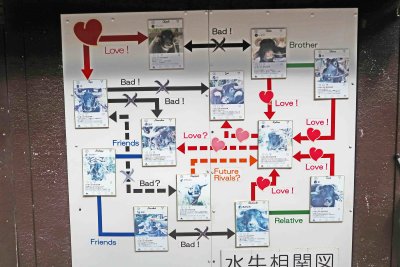
Not exactly sure how to read this rating of water buffalo on Taketomi Island |
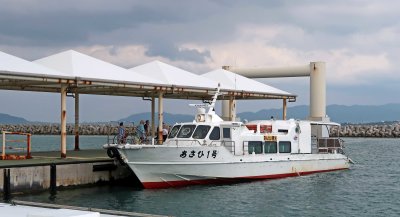
Our high speed ferry from Taketomi Island |
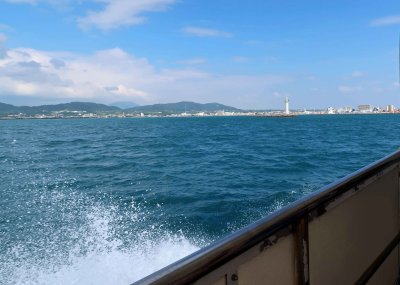
Returning to Ishigaki Island |
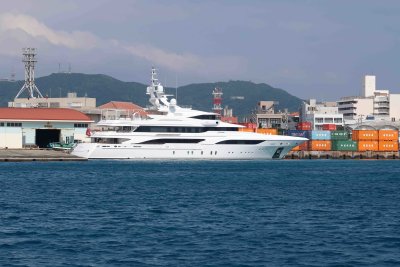
Nice Yacht in Ishigaki Bay |
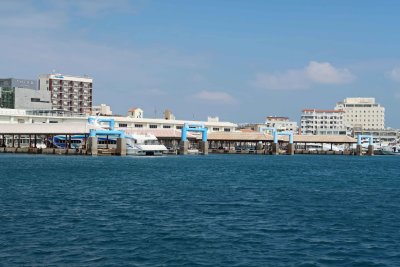
Ishigaki Ferry Terminal |
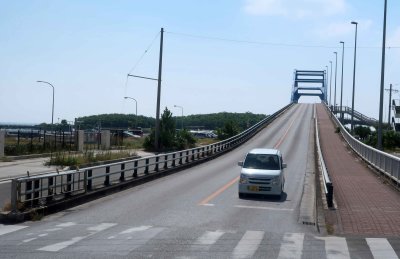
Cars drive on the left on Ishigaki Island |
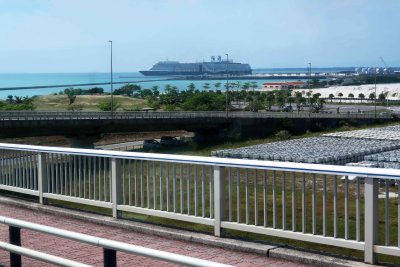
Holland America Westerdam Docked on Ishigaki Island |

Sailing away from Ishigaki Island |











